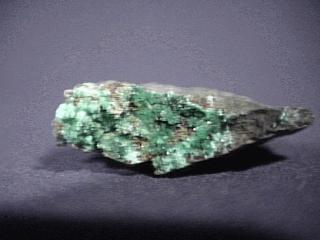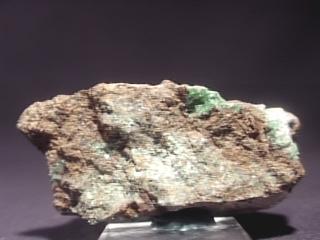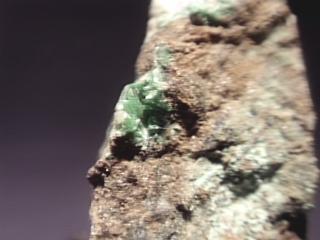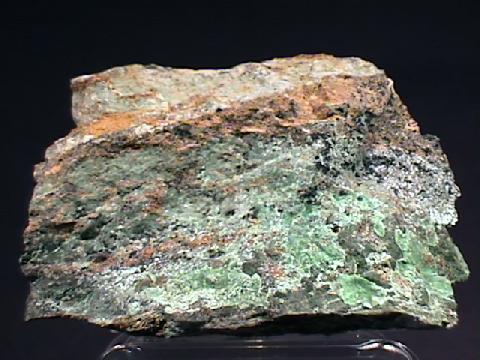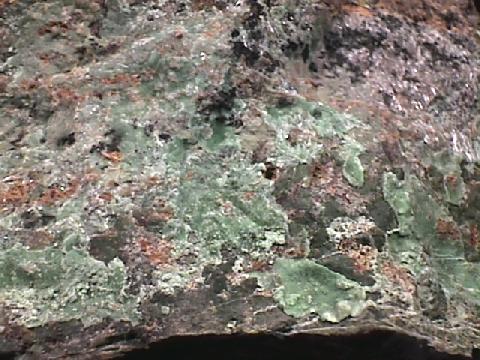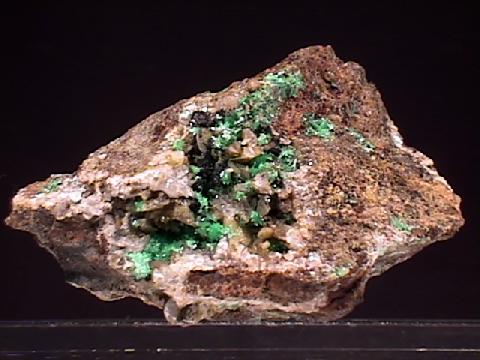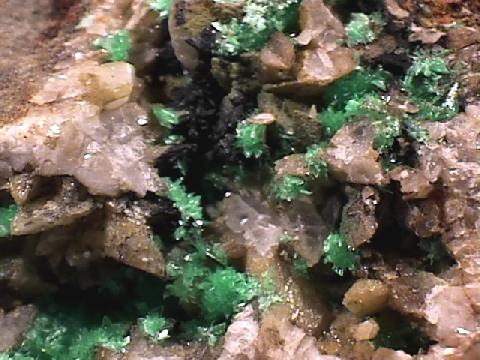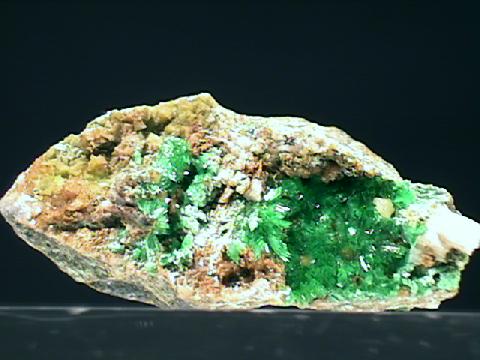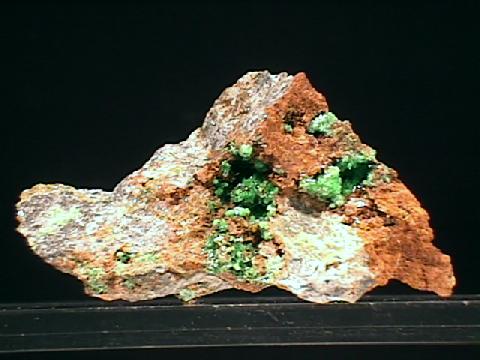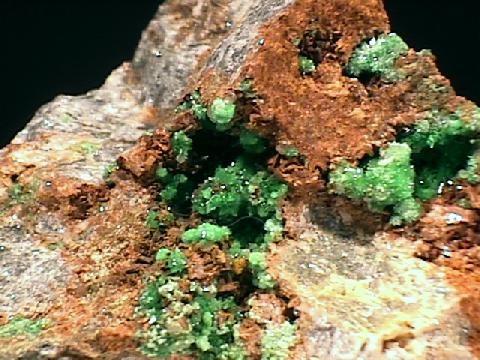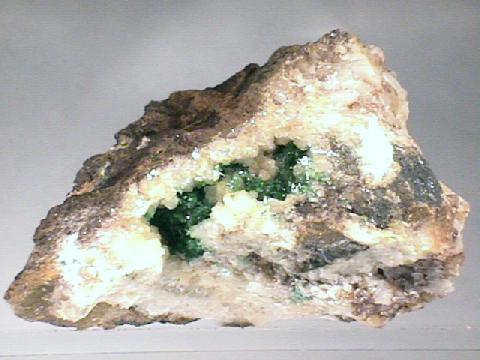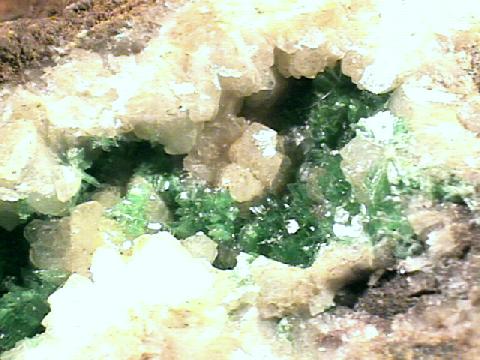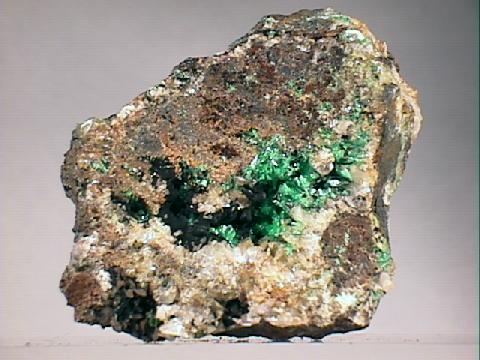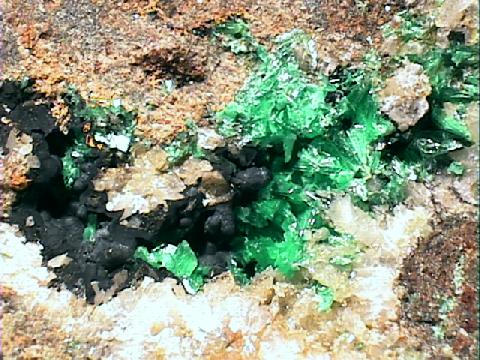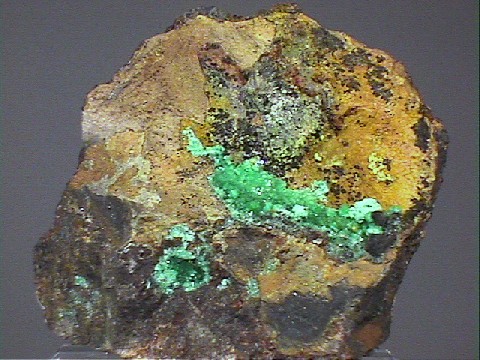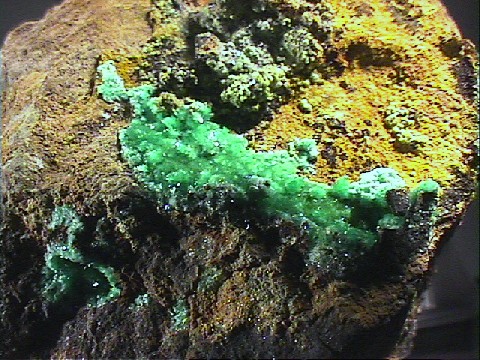 THE MINERAL ANNABERGITE
THE MINERAL ANNABERGITE
- Chemistry: Ni3(AsO4)2-8(H2O) , Hydrated Nickel Arsenate
- Class: Phosphates
- Group: Vivianite
- Uses: A very minor ore of nickel and mineral specimens
- Specimens
Annabergite has a wonderful, bright green color.
This characteristic color is easily noticeable and was used to spot veins of nickel-bearing ore.
Annabergite, or "Nickel Bloom" as it is called by miners, is a weathering product of nickel-containing minerals such as
niccolite, NiAs.
Where weathered cobalt and nickel ores are found, both
erythrite, Co
3(AsO
4)
2-8(H
2O) and annabergite are important markers.
Erythrite, called "Cobalt Bloom", is bright red-purple and is isostructural with annabergite.
Isostructural means that the two minerals have the same structure but different chemistries.
The two minerals are actually in a series where the nickel and cobalt ions can substitute freely for each other.
When the two ions are in near-equal concentrations, the resulting color is gray or off-white.
A third mineral is also isostructural with annabergite and is called
kottigite or koettigite, Zn
3(AsO
4)
2-8(H
2O).
However, the series is incomplete, meaning that the zinc and nickel ions only substitute for each other on a very limited basis.
Most annabergite is found in a crust or powder form, but a few specimens from Greece show small, well-shaped crystals.
This mineral, when found in fine green crystals, can be rather attractive.
PHYSICAL CHARACTERISTICS:
- Color is bright apple green to pale green or gray in massive and thin crust forms.
- Luster is vitreous to adamantine to dull in massive or powdered forms.
- Transparency: Crystals are transparent to translucent.
- Crystal System is monoclinic; 2/m
- Crystal Habits include flattened striated blades or radiating accicular crystals, but large crystals are extremely rare.
More commonly as crusts or powdery masses.
- Cleavage is perfect in one direction.
- Fracture is flaky.
- Hardness is 1.5 - 2.5
- Specific Gravity is approximately 3.0 - 3.1 (average for translucent minerals)
- Streak is pale green or gray, in gray specimens.
- Associated Minerals are niccolite, skutterudite, gersdorffite and erythrite.
- Other Characteristics: Thin flakes are flexible.
- Notable Occurrences include Cobalt, Ontario; Lavrion, Greece; Humboldt, Nevada, USA; Sierra Cabrera, Spain and Germany.
- Best Field Indicators are color, softness, associations, and flexible crystals.
 THE MINERAL ANNABERGITE
THE MINERAL ANNABERGITE
